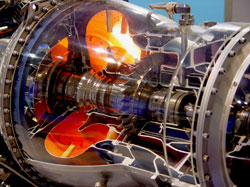Modelling heat transfer inside the combustion chamber
Engineers use Computational Fluid Dynamics (CFD) to describe complex flows, for example inside car engines. As with all modelling techniques, there is always room for improvement. In the framework of the MINNOX project, auto manufacturer DaimlerChrysler investigated the factors influencing heat transfer and how to address them in CFD simulations. The research was led by the Engine Research Center (ERC) of DaimlerChrysler. ERC began by examining the effects of density variation in the air-fuel mixture inside the combustion chamber. By applying a compressibility correction to the heat transfer coefficient, they were able to calculate more accurate values of heat flux. ERC integrated the compressibility correction into the code of two well-known CFD models: KIVA-3 and STAR-CD. Subsequently, the two models were used to simulate flow, combustion and heat transfer in MINNOX prototype engines. Comparison with experimental data revealed that both models were able to successfully reproduce the heat fluxes that they had previously underestimated. Minor discrepancies between KIVA-3 and STAR-CD were attributed to differences in the parameterisation of turbulent kinetic energy at the cylinder walls. ERC also managed to produce a mesh-correction that improved agreement with the wall functions provided by their MINNOX partners at the Delft University of Technology and King's College London. Collectively, the new advances achieved by ERC ensure a more accurate treatment of heat transfer with CFD. This, in turn, will enable the MINNOX partners to identify the most effective ways to reduce the formation of nitrogen oxides inside engines.







